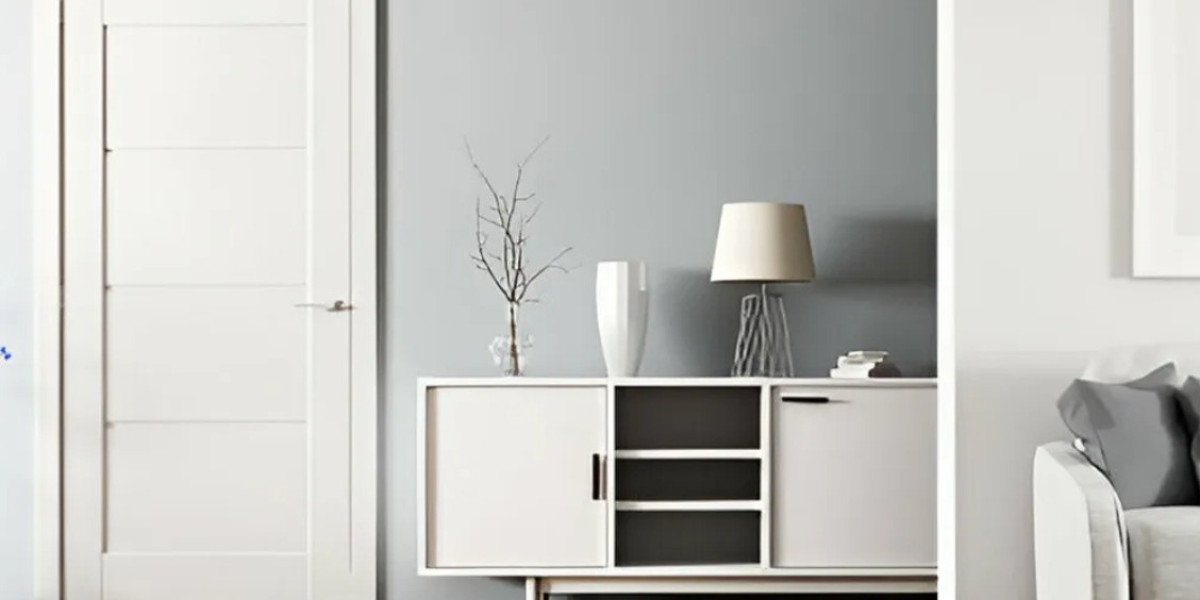When choosing interior doors for residential or commercial spaces, two popular options often come up: solid core doors and fire-rated interior doors. Both offer distinct advantages depending on the application, whether it's enhancing security, improving soundproofing, or ensuring fire safety.
In this blog, we’ll explore:
What solid core doors are and their benefits
What fire-rated interior doors are and their importance
Key differences between the two
Best applications for each type
Factors to consider when choosing between them
By the end, you’ll have a clear understanding of which door type best suits your needs.
1. What Are Solid Core Doors?
Solid core doors are interior doors constructed with a dense, solid interior (usually made of wood composite, particleboard, or laminated timber) and covered with a veneer or laminate finish. Unlike hollow core doors, which have an empty space inside, solid core doors provide better durability, sound insulation, and security.
Key Features of Solid Core Doors:
Dense Construction: Filled with wood, particleboard, or other solid materials.
Soundproofing: Reduces noise transfer between rooms better than hollow core doors.
Durability: More resistant to dents, warping, and wear over time.
Weight: Heavier than hollow core doors, requiring sturdy hinges.
Cost: More expensive than hollow core but less than premium fire-rated doors.
Common Uses of Solid Core Doors:
Bedroom and bathroom doors (for privacy)
Office doors (for noise reduction)
High-traffic areas where durability is essential
2. What Are Fire-Rated Interior Doors?
Fire-rated interior doors are specially designed to resist fire and smoke for a specified period, typically 20, 45, 60, or 90 minutes. These doors are constructed with fire-resistant materials such as steel, gypsum, or mineral cores and are often required by building codes in commercial buildings, multi-family residences, and certain residential applications.
Key Features of Fire-Rated Doors:
Fire Resistance: Slows the spread of fire and smoke between rooms.
Certification: Must meet standards like NFPA 80, UL listings, or local building codes.
Construction: Often includes intumescent seals that expand under heat to block smoke.
Materials: Steel, solid wood with fire-retardant treatment, or composite cores.
Weight: Generally heavier than standard solid core doors.
Where Are Fire-Rated Doors Required?
Apartment buildings (especially between units and corridors)
Commercial offices and hospitals
Stairwells and emergency exits
Garages leading into living spaces
3. Solid Core vs. Fire-Rated Doors: Key Differences
| Feature | Solid Core Doors | Fire-Rated Doors |
|---|---|---|
| Primary Purpose | Soundproofing, durability, security | Fire and smoke resistance |
| Core Material | Wood composite, particleboard | Steel, gypsum, mineral core |
| Fire Resistance | Minimal (unless specially treated) | 20-90 minutes (certified) |
| Sound Insulation | Better than hollow core | Varies (some offer good soundproofing) |
| Cost | Moderate | Higher (due to specialized materials) |
| Building Code Requirement | No (unless specified) | Often required in commercial/multi-family buildings |
| Weight | Heavy | Very heavy (requires strong framing) |
Which One Should You Choose?
Choose Solid Core Doors If:
You need better soundproofing and durability.
Fire resistance is not a primary concern.
You want a high-quality interior door at a reasonable price.
Choose Fire-Rated Doors If:
Building codes require fire protection.
You need extra safety in multi-family or commercial buildings.
You want added security and sound insulation (some fire-rated doors offer both).
4. Factors to Consider When Choosing Between Solid Core and Fire-Rated Doors
A. Building Codes & Regulations
Fire-rated doors are often mandated in commercial spaces, apartment buildings, and certain residential areas (e.g., garage-to-house doors).
Solid core doors may be sufficient for standard homes unless local codes specify otherwise.
B. Soundproofing Needs
Solid core doors are excellent for reducing noise between rooms.
Some fire-rated doors also provide sound insulation (look for STC ratings).
C. Budget
Solid core doors are more affordable than fire-rated ones.
Fire-rated doors are an investment in safety but cost more due to specialized materials.
D. Aesthetic Preferences
Both door types come in various finishes (wood, laminate, steel).
Fire-rated doors may have fewer design options due to material constraints.
E. Installation & Maintenance
Both require professional installation due to weight.
Fire-rated doors must be installed correctly to maintain their rating (proper seals, frames, and hardware).
5. Conclusion: Which Door Is Right for You?
For most homes, solid core doors provide an excellent balance of durability, soundproofing, and cost-effectiveness.
For commercial buildings, apartments, or fire-prone areas, fire-rated doors are essential for compliance and safety.
Hybrid options exist—some doors combine solid core construction with fire-resistant treatments for dual benefits.
Before making a decision, always check local building codes and consult with a door specialist to ensure you meet safety and performance requirements.
Final Thoughts
Whether you prioritize privacy and durability (solid core) or fire safety and compliance (fire-rated), choosing the right interior door enhances both functionality and security. Investing in the right type ensures long-term satisfaction and safety for your property.








